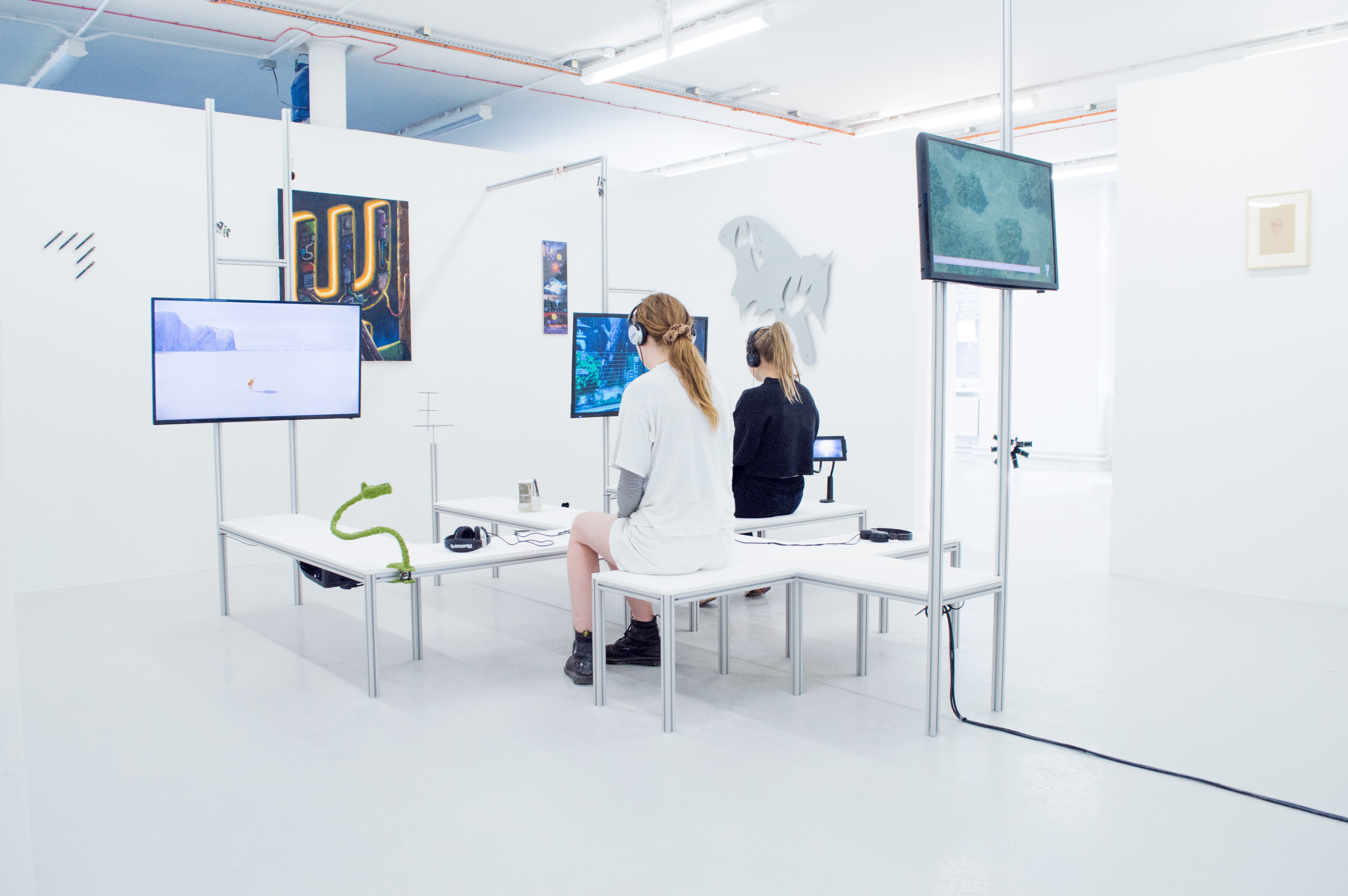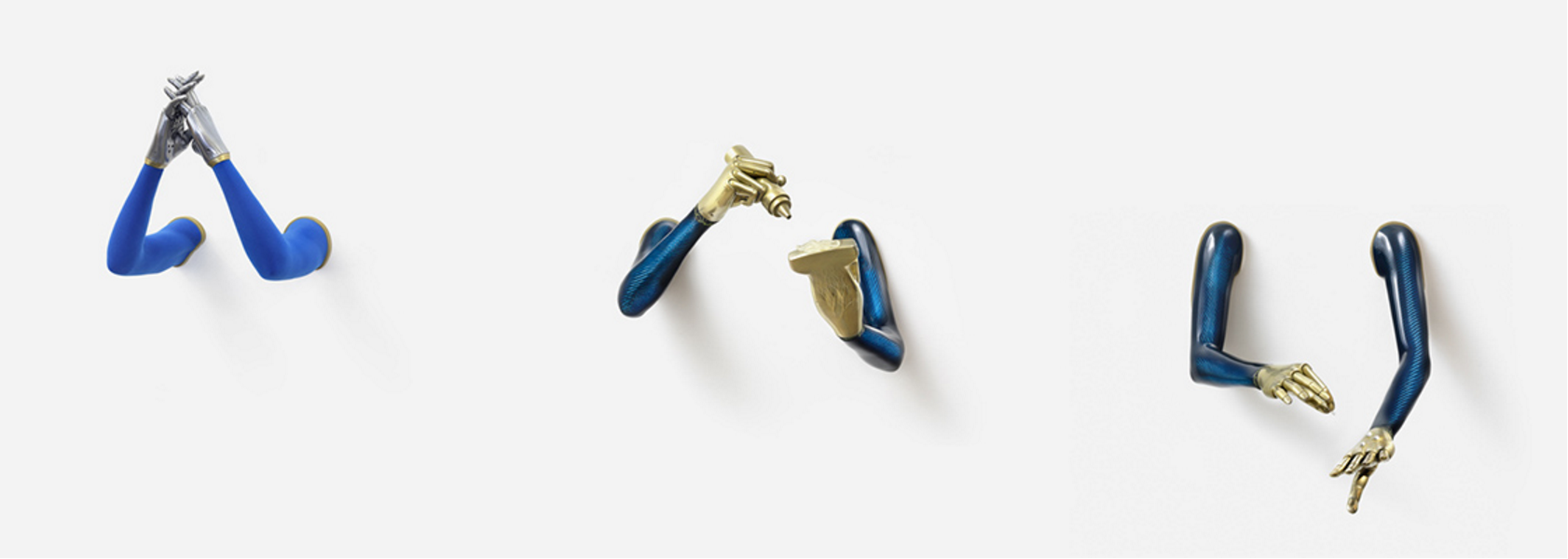
Aleksandra Domanovic, Substances of Human Origin, Courtesy de l'artiste.
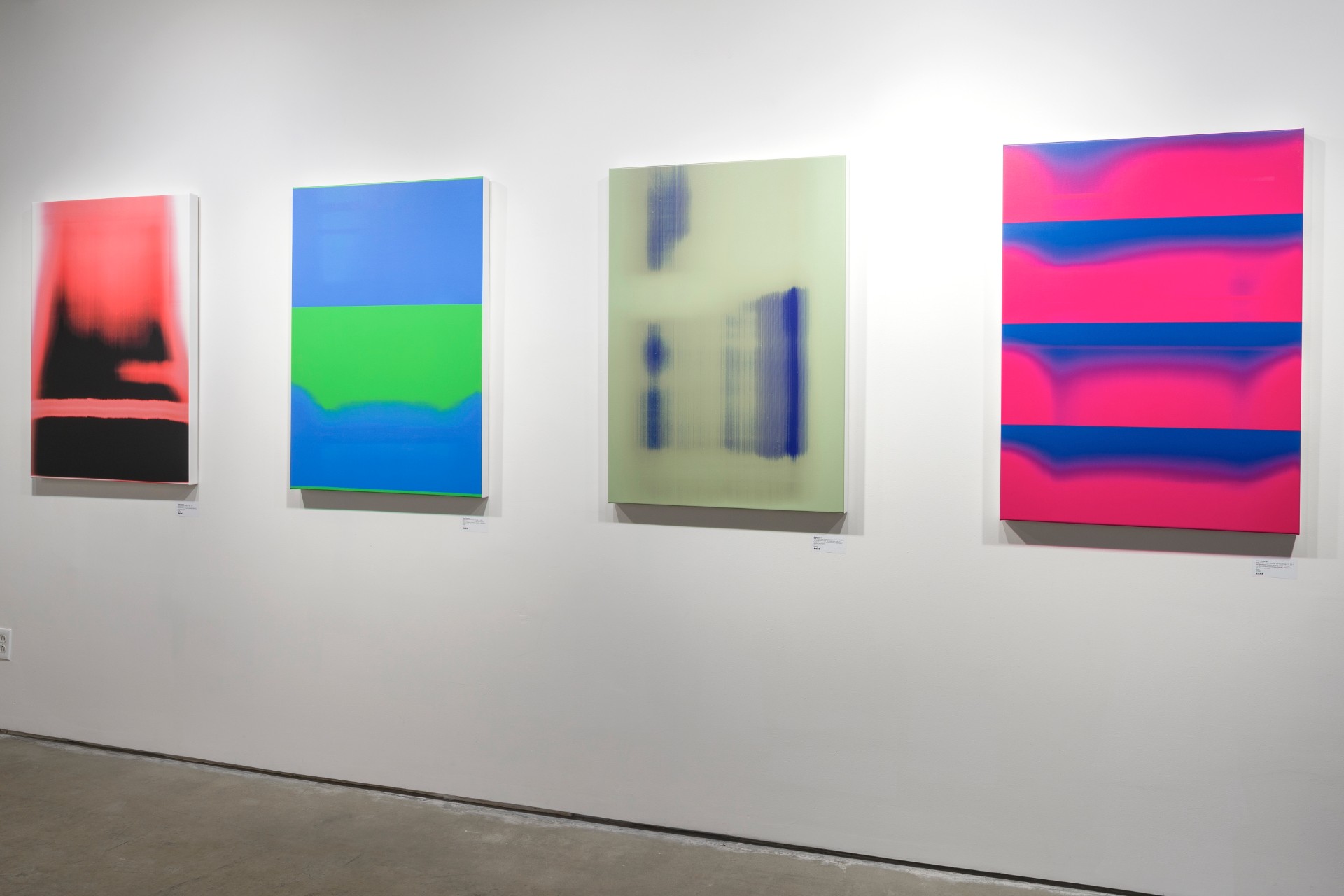
Adam Basanta, All We'd Ever Need Is One Another, 2018. Photo de Guy L'Heureux.
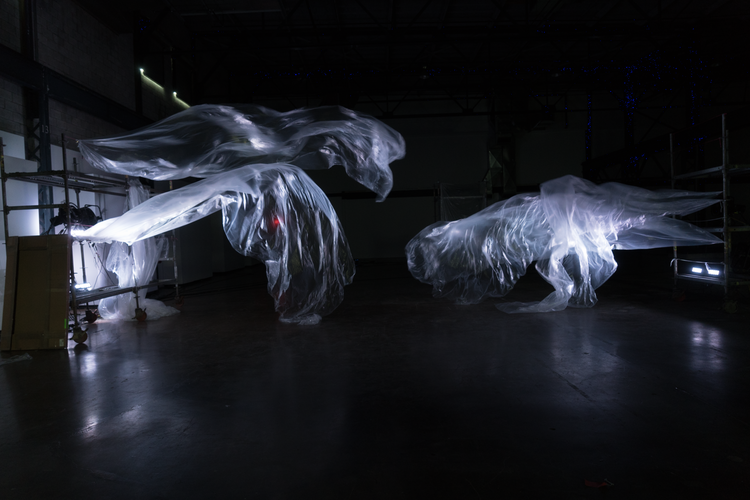
Light Society, Sakchin Bessette & Aliya Orr, Whispers. Courtesy des artistes.
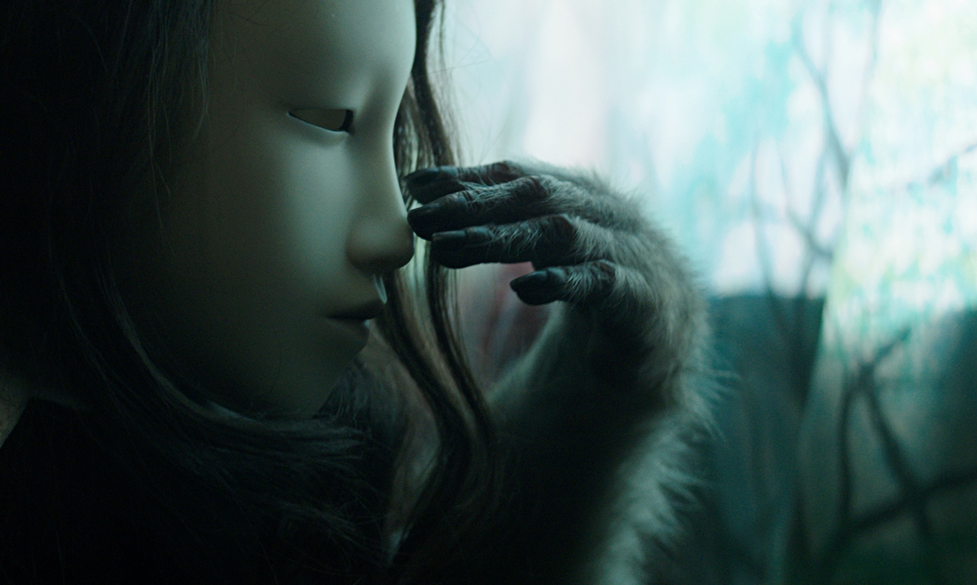
Pierre Huyghe, Human Mask, 2014. Courtesy de l'artiste, © Pierre Huyghe
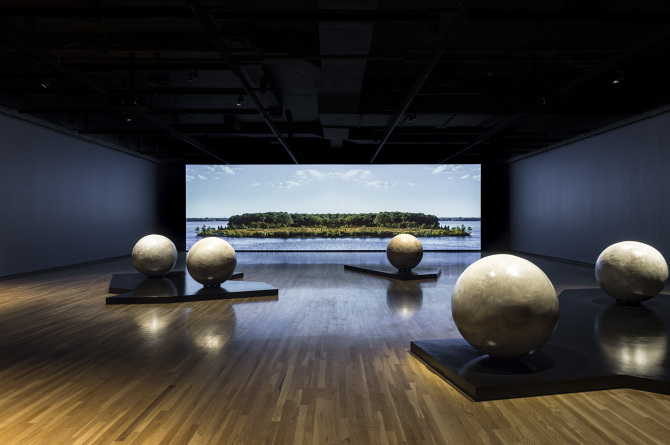
Caroline Monnet, Like Ships in the Night, Photo: Rita Taylor
From June 29 to August 05, the BIAN will be reinforcing its partnership with Arsenal Contemporary Art by holding a major exhibition within its gallery spaces. Local and international artists will come together for a cultural event on an unprecedented scale: featuring over thirty artists from all over the world, the exhibition will be an extraordinary event, both for the public and for participants from within the domain of contemporary art.
The AUTOMATA – Sing the Body Electric exhibition invites reflection on human beings and their relationship with technology. Several of the featured artists question corporeality and its development in tandem with technological advances. ArtJaws selected for you five artists you should not miss during the BIAN.
Aleksandra Domanović
Aleksandra Domanović’s work is concerned with the circulation and reception of images and information, particularly as they shift meaning and change register, traversing different contexts and historical circumstances. Her works create strange taxonomies and manic associative chains that poke and prod at copyright laws, unpack the geopolitical implications of Web domains, or explore, for instance, the model of exhibitions. Most recently, Domanović has turned her attention to the complex ways in which image culture and information flows have formed the postwar environment of former Yugoslavia.Substances of Human Origin is inspired by the hand of Belgrade, the first artificial hand invented by one of Yugoslavia’s internet pioneers, Rajko Tomović.
Adam Basanta
Adam Basanta goes one step further with his installation « All We’d Ever Need is One Another », a mixed-media installation which creates images autonomously by self-generating scanning techniques and a “continuously running art-factory operating independently of human input.” The automatization that technology enables and its constant presence in our daily lives also have an impact on nature. Going beyond relationships with the body, artists of the Anthropocene era are raising new questions: in a world where we are more technologically assisted, what might this impact on nature look like?
Light Society
Light Society is a collaboration between artists Aliya Orr and Sakchin Bessette exploring the intersections of art, science, and mysticism. Whispers is part of Light Society’s ongoing Tools for Transformation series (2016-present), which imagines new therapeutic modalities for possible human futures. Synthesizing elements from both ancient and contemporary practices, Light Society has created an immersive installation that invites participants to surrender body and mind for potential transformation. Employing wind, light, and sound to both playful and therapeutic effect, Whispers allows viewers to explore the boundaries of ordinary experience.
Pierre Huyghe
In Pierre Huyghe work, the boundary between fiction and reality fades as the experience of the world builds itself. In his magnificently and meticulously constructed environments, people and puppets behave as equals while animals and plants seem to wander quietly on both sides of the imaginary border. Human mask, produced in 2014, takes us into a Japanese landscape bearing the damage of the recent tsunami and the Fukushima nuclear disaster. There, we witness a scene inspired by real events: with its face hidden by a traditional mask, a monkey sits in the empty ruins of a restaurant, seemingly awaiting customers who never come.
Caroline Monnet
Like ships in the night centres around a twenty-two-day journey across the Atlantic Ocean that the artist took in the summer of 2012, and documented via handheld Mini DV. Covering a fifth of the earth’s surface, the Atlantic Ocean has seen war, exchange, hope, greed, migration, and plunder. The imagery of the journey is dotted by markers of industry, refracted light, ships as shadows in the distance, and boiler rooms of infinite gauges; with Morse code and jamming radio signals providing a continuous backing track. Caroline Monnet here critiques the colonial, industrial and economic interchange between Canada and Europe as an indigenous woman.
Complete artists list: Manfred Mohr, Bernd Lintermann, Nikolaus Völzow & Peter Weibel, Ralf Baecker, Ed Fornieles, Aleksandra Domanovic, Le duo Projet EVA (Simon Laroche & Etienne Grenier), Li Alin, kawennati, Omer Fast, Adam Basanta, Light Society, Sakchin Bessette & Aliya Orr, Pierre Huyghe, Robin Meier, Caroline Monnet.
More information here

